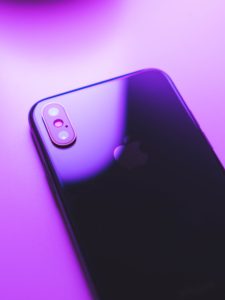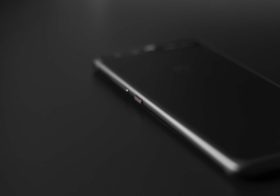Device Advice – 2018, a year in review (part two)
Welcome to part two of a special edition of our ‘Device Advice’ blog, where we have taken a look back at some of the key smartphone launches of 2018 from July onwards.
In part one we took a look back at the Nokia 8 Sirocco, the Samsung Galaxy S9 and S9 Plus, the Huawei P20 and P20 Pro, the HTC U12 and the OnePlus Six. These smartphones offered significant improvements in comparison to their predecessors and really set the scene for 2018 devices.
In part two, we take a look at the smartphone releases that dominated conversation in the second half of 2018, including the latest flagship devices from Google, Samsung and Apple.
Samsung Galaxy Note 9
Announced at its Unpacked event in Brooklyn New York, Samsung had a point to prove to the market. The Galaxy Note 9 was introduced to the world as the “most powerful mobile device… a device designed to break through barriers”.
However, the Samsung Galaxy Note 9 seemed to be more of an evolution than a revolution with similar features and style. Poised as a business productivity powerhouse and running on Qualcomm Snapdragon 845, the Samsung Galaxy Note 9 does however, offer more functionality than its predecessor. It also offers remote access capabilities and the storage has doubled, with 128GB and 512GB options available. For those looking for more, the Samsung Note 9 can even allow for a whopping 1TB of storage.
The Note 9 was released with the largest edge-to-edge screen of a Note model to date, with a 6.4-inch super AMOLED infinity display. It’s not just the screen that will entice photography fans, but also the camera. The Note 9 has a dual camera system, carrying the ‘intelligent camera’ capabilities that are quickly becoming synonymous with Samsung’s latest devices.
However, the device does come with a premium price tag and sits as one of the most expensive releases of the year at £915.83 (ex VAT) for the 512GB model and £749.17 for the 128GB version.
iPhone XS, XS Max and XR

A year on from Apple’s iPhone 10-year anniversary, three new iPhones were launched which contained Apple’s new 7nm A12 Bionic chip – set to improve device performance by up to 50%.
The iPhone XS is the direct successor of the iPhone X, debuting at 5.8 inches with an OLED screen, while the iPhone XS Max fulfils the role of the previous ‘plus’ range, at 6.5-inches, packing in 3.3 million pixels. The XS and XS Max devices came to the market with Super Retina resolution screens and Dolby Vision, secured within surgical-grade stainless steel to reduce the impact of knocks and scratches.
The camera capabilities of a modern phone continue to fascinate many, and Apple’s latest releases provided some interesting improvements; a new image sensor, improved True Tone flash, Smart HDR and advanced depth control.
These devices all came to market with a hefty price tag, though the iPhone XR offers a more competitive price for a similar range of features.
Google Pixel 3 and Pixel 3 XL
![]()
Bold claims from Google pre-launch suggested the Google Pixel 3 and 3 XL would provide users with the best smartphone camera yet, marketing the product as a “new way to see the world”.
In October, Google revealed the Pixel 3 and Pixel 3 XL powered by the Qualcomm Snapdragon 845 and all set with Android’s 9 Pie software. The main difference between the Pixel 3 and the 3 XL was the notch, with the XL featuring this hotly contested feature.
Google invested heavily in the camera capabilities of both devices, including a range of AI features that have been built into the Pixel 3, such as ‘Lens’, a night-shooting mode. Compared to the Pixel 2, the Pixel 3 has an extra front-facing camera with a wide-angle lens.
Although the third iteration of Google’s flagship phones aren’t a huge leap forward compared to its predecessors, the Pixel range does bring Android to the user in the way Google intended.
Huawei Mate 20 Pro
Also in October, Chinese smartphone giant Huawei unveiled not one, but four new devices. The Mate 20 and Mate 20 Pro, a giant Note-sized 7.2-inch Mate 20 X, and a Porsche-branded variant.
It was the Mate 20 Pro that packed the technical punch, combining nearly every desirable feature of modern smartphones. The Mate 20 Pro has three rear cameras (each offering a different focal length), an in-display fingerprint sensor, 3D face recognition and a high-resolution 6.4-inch OLED display.
It is very apparent that the Mate 20 Pro is Huawei’s attempt at the best smartphone and packing all these premium features the company is very much a key player, offering the likes of Samsung and Apple some serious technical competition.
2018 has been the year that smartphone manufacturers focused on revolutionising rather than redefining their capabilities. With 5G approaching, and key device anniversaries for the likes of Samsung coming up in February, we predict some major technology breakthroughs next year.
Stay tuned to the Adam Phones blog for the latest insights and developments in the industry. Make sure to keep in touch with us on LinkedIn and Twitter.


